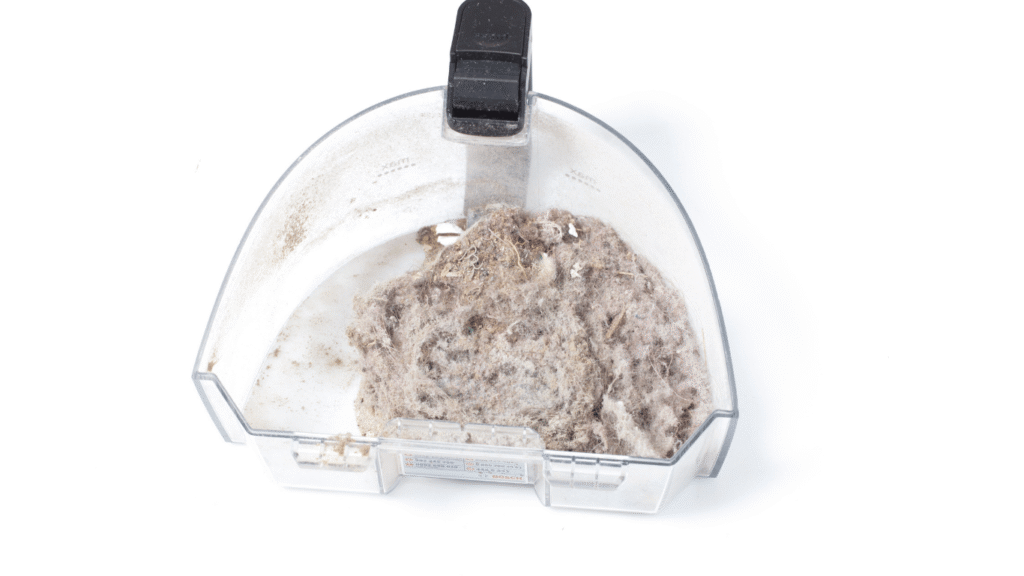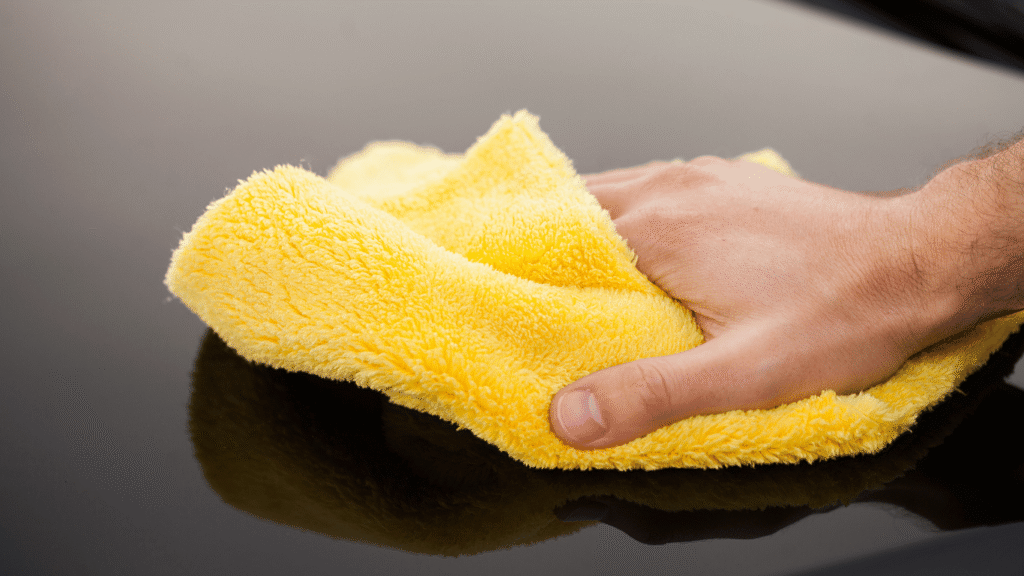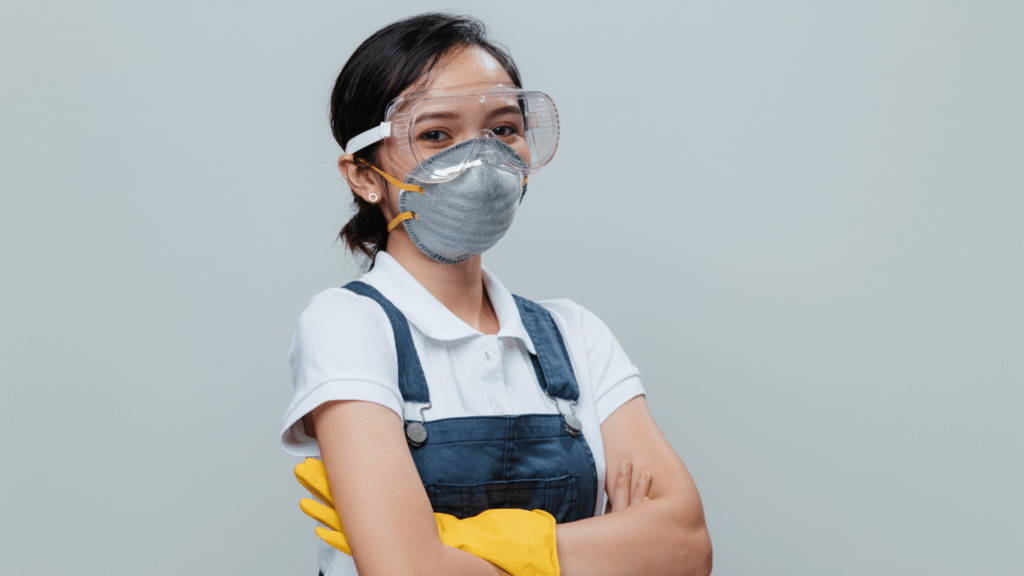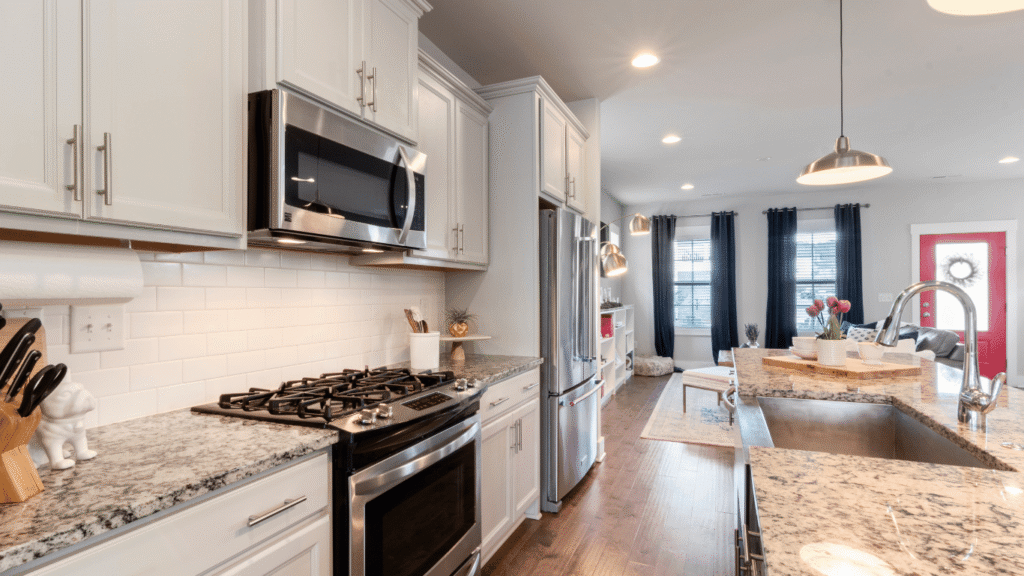
Jasper Pasion
Dust-Free Home: Post-Construction Residential Cleaning Services
The scent of fresh paint, the gleam of new countertops, the promise of your very own space – it’s super exciting when you’re finally done with a new build or renovation. But then reality hits: construction dust. It’s everywhere, clinging to every surface, sneaking into every nook, and turning your dream home into a gritty mess. It’s a totally normal part of building or remodeling, but it definitely doesn’t have to stick around forever.
Think of it this way: effective post-construction cleaning isn’t just a quick tidy-up. It’s essential to transform that dusty construction zone into a healthy, dust-free, and truly livable home. This isn’t your everyday house cleaning spree; it’s a special one-time job that needs specific tools, smart techniques, and a super detailed approach to tackle all that unique construction gunk and that super fine, often invisible, dust that gets into your living space. If you skip this crucial step, you could end up in a place that’s not just messy, but potentially bad for your health.
What’s Up with Construction Dust Anyway?

Before we dive into cleaning, let’s get to know our opponent: post-construction debris. This isn’t just regular household residue; it’s a wild mix of different materials, and each one has its own quirks and potential health risks.
The Different Kinds of Dust You’ll Find
Construction sites are particle-making machines, churning out all sorts of tiny bits:
- Gypsum: This is probably the most common culprit. It’s incredibly fine and floaty, settling on everything.
- Sawdust (wood particles): Comes from cutting wood, and these bits can be all different sizes, often sticking to stuff thanks to static.
- Silica: This one’s a big deal. Concrete dust has something called crystalline silica, which can be seriously bad for your lungs if you breathe it in.
- Insulation fibers: These little guys can be really irritating to your skin and lungs, especially when insulation is being put in or taken out.
- Paint overspray/residue: Not as airy as other residue, but dried paint drops can be a pain to get off surfaces where they don’t belong.
- Metal shavings: Small, sharp bits of metal from plumbing, electrical work, or other metal jobs can be left behind, and nobody wants to step on those!
Why This Dust is a Health Hazard

All these different dust types can lead to some real health headaches for anyone living in the house:
- Breathing problems: Those tiny dust particles, especially from drywall and concrete, are easy to inhale. They can make allergies and asthma worse, or even cause bronchitis. And if you’re exposed to silica dust for a long time, it can lead to silicosis, a nasty, permanent lung disease.
- Skin and eye irritation: Lots of dust types, like insulation fibers and some chemical bits, can make your skin itchy, cause rashes, or irritate your eyes.
- Long-term health stuff: Beyond just being annoying in the short term, constant exposure to construction dust can mess with your breathing over time and might even contribute to other health issues.
The Tricky Bits of Post-Construction Cleanup
Construction work throws some unique challenges our way:
- Dust gets EVERYWHERE: Because it’s so fine, particles can sneak into the tiniest cracks, vents, and tight spots. Getting it all out is a huge job.
- You need special gear: Your regular broom and vacuum just won’t cut it. You’ll need industrial-grade vacuums with HEPA filters, special cleaning cloths, and specific cleaning agents.
- Hidden surprises: Beyond what you can see, there might be little screws, nails, small bits of building material, or even tiny glass shards hiding in carpets, under appliances, or behind fixtures. These can be dangerous!
Step-by-Step: House Cleaning Process
To truly get your home sparkling, we usually break down detailed cleaning after construction into a few clear stages.
Phase 1: The “Rough” Clean (Getting Rid of the Big Stuff)
This is the first pass, focusing on all the biggest and most obvious leftover construction junk.
- Hauling away big debris: This means tossing out wood scraps, empty packaging, cardboard boxes, plastic sheets, and any other large items the construction crew left behind.
- First vacuum of major dust: Grab an industrial vacuum and do an initial sweep to pick up the heaviest layers of dust and loose dirt from floors and easy-to-reach spots.
- Sweeping and bagging visible dust: After vacuuming, a good sweep helps gather up any remaining larger particles, which then get bagged and tossed. This step just clears the way for the more detailed house cleaning that comes next.
Phase 2: The “Light” Clean (Getting Down to Detail)
Now, the real meticulous work begins, focusing on cleaning and detailing surfaces.
- Dust from the top down: Always start cleaning from the highest points – ceilings, light fixtures, ceiling fans, and air vents. This way, dust falls downwards, and you don’t re-dirty areas you’ve already cleaned.
- Inside windows and mirrors: All glass surfaces get a super thorough cleaning to get rid of dust, smudges, and any paint overspray, leaving them perfectly clear.
- Wiping down everything: Every accessible surface – countertops, shelves, cabinet exteriors and interiors, baseboards, door frames, and window sills – gets a good wipe-down to grab that fine dust.
- Bathrooms and kitchens: These areas get special attention. Fixtures, appliances (inside and out!), sinks, toilets, showers, and tubs are all cleaned and disinfected.
- Vacuuming and mopping floors: After a comprehensive vacuuming of all floor types, hard surfaces get mopped with the right formulated cleaners to remove any lingering dust and grime.
Phase 3: Final Touches (Making It Perfect)
This last stage takes care of the dust that always seems to resettle and makes sure your home is truly ready to move into.
- Re-dusting everything: Even after a thorough clean, some dust will inevitably float around and settle again. A final, super careful re-dusting of all surfaces is key to catching these last few particles.
Spot cleaning any smudges: A detailed check helps find any spots you might have missed, or any fingerprints, which then get cleaned up. - Deep cleaning carpets and rugs: Carpets and rugs get another thorough vacuuming, often with a powerful HEPA-filtered vacuum, to pull out any deep-seated dust.
- Polishing fixtures: Metal fixtures, faucets, and other shiny surfaces get polished to a brilliant shine, giving everything that perfect finishing touch.
- Final inspection: You do one last walk-through to make sure every single corner meets the highest cleanliness standards, and that your home is genuinely dust-free and ready for you!
The Right Tools for the Job
To truly get your home dust-free after construction, achieving the best cleaning requires more than just your regular supplies. Special tools are a must.
Heavy-Duty Vacuums (with HEPA Filters!)

These are probably the most important tools for this kind of cleaning.
- Way better than regular vacuums: Unlike your home vacuum, these industrial-grade machines have way more suction power, bigger capacities, and are built tough to handle construction mess.
- Wet/Dry capabilities: Many pro vacuums can handle both wet and dry messes, making it easy to clean up spills and liquids along with dust.
- HEPA filtration is KEY: This is non-negotiable. HEPA filters are designed to capture at least 99.97% of airborne particles as tiny as 0.3 micrometers, including even the finest construction dust. This means the dust gets trapped, not blown back into the air.
Microfiber Cloths and Mops

- Dust magnets: Microfiber material is awesome at attracting and holding onto dust, dirt, and allergens because of its unique fiber structure.
- No lint left behind: They clean without leaving any fuzzy bits, which is super important for truly sparkling surfaces.
Specific Cleaning Solutions
Using the correct and eco-friendly cleaning products is crucial for both effectiveness and safety.
- All-purpose cleaners: Great for general wiping down of various surfaces.
- Glass cleaners: Crafted for spotless windows and mirrors, ensuring a streak-free shine.
- Degreasers: You’ll need these to cut through grease and grime, often found in kitchens or around certain machinery.
- Disinfectants: Important for sanitizing bathrooms, kitchens, and other high-touch spots, especially after lots of workers have been around.
Safety Gear (PPE)

Keeping the cleaner safe is just as important as cleaning the home.
- Respirators/Dust masks: Essential for filtering out tiny dust particles so you don’t breathe them in. Look for N95 respirators.
- Gloves: Protect your hands from harsh chemicals and any sharp bits of debris.
- Eye protection: Goggles or safety glasses shield your eyes from dust, chemicals, and anything that might fly around.
Ladders and Extension Poles
You’ll need these to safely reach high ceilings, light fixtures, and other elevated surfaces.
Trash Bags and Bins
Grab some heavy-duty trash bags and sturdy bins to handle the large amount of debris and dust you’ll collect.
Easy Steps to a Clean, Dust-free Home
Beyond just having the right tools, using smart techniques makes a huge difference in getting rid of all that residue and keeping it from coming back.
Wet Wiping vs. Dry Dusting
Choosing between wet and dry methods depends on the surface and the dust.
- When to use each: Dry dusting is okay for a first pass on loose, light dust, especially on surfaces that don’t like moisture. But for most construction dust, wet wiping is much better.
- Don’t just spread dust around: Dry dusting can often just kick fine dust back into the air. Wet wiping with a damp (not soaking wet!) microfiber cloth actually traps the dust particles, stopping them from becoming airborne again. Make sure to rinse your cloth often!
Why HEPA Filtration Matters So Much
Again, HEPA filtration in your vacuums and any air scrubbers is super important. It makes sure those tiny dust particles, including dangerous silica and allergens, are captured and contained, instead of being blown back into your air. This makes a huge difference in your indoor air quality.
Be a Detail Detective
Construction dust is sneaky. To keep your home, you have to be obsessively detailed:
- Corners, crevices, baseboards: These are favorite hiding spots for dust. Use vacuum attachments and small brushes to dig it out.
- Inside cabinets and drawers: Even if they were closed, fine dust can get in. Every cabinet and drawer should be wiped clean, inside and out.
- Light fixtures and vents: These are dust magnets and need to be thoroughly cleaned.
Clean Air, Too! (Optional but Recommended)
For an even higher level of air quality, think about these:
- Air scrubbers: These portable machines pull in air, filter out tiny particles, and send clean air back out. They’re great for reducing airborne dust.
- Run the HVAC system with new filters: Once the main cleaning is done, let your home’s heating and cooling system run for a day or two with brand new, high-quality filters (like MERV 11 or higher). This helps circulate and catch any leftover floating particles.
Specific Rooms that Need Special Attention

Regardless of home size, every room has its unique challenges and needs specific care during post-construction cleanup.
Kitchens
Kitchens, with all their surfaces and potential for hidden dust, need extra care.
- Inside/outside cabinets and drawers: Wipe down every surface, making sure no sawdust or drywall dust remains.
- Appliances (inside and out!): Clean all new appliances, peeling off protective films, stickers, and any construction residue. Don’t forget to check inside the dishwasher, oven, and fridge.
- Countertops and backsplashes: Clean these thoroughly, getting rid of any caulk residue, paint splatters, or dust.
Bathrooms
Often have lots of small, intricate fixtures where dust loves to hang out.
- Fixtures, tiles, grout: Clean and polish all chrome fixtures. Scrub tiles and grout to get rid of construction grime and any dried grout haze.
- Mirrors and shower enclosures: Clean glass surfaces until they’re perfectly streak-free.
Flooring
Different floors need different types of cleaning methods.
- Hardwood: Vacuum very carefully with a soft brush attachment, then damp mop with a wood-safe cleaner. Don’t use too much water!
- Tile/Grout: Vacuum well, then scrub tiles and grout lines to remove dust and any dried grout film. Rinse thoroughly.
- Carpets: Need a deep vacuuming, maybe even a few passes, with a powerful HEPA-filtered vacuum. If they’re really dirty, steam cleaning might be necessary.
Walls and Ceilings
Often forgotten, but super important for a truly dust-free home.
- Dusting, spot cleaning: Use a dry duster with an extension pole for the first pass, then spot clean any smudges, fingerprints, or scuff marks with a damp cloth and a gentle cleaner.
- Removing smudges: Pay extra attention to areas around light switches and door frames.
Windows and Doors
- Frames, sills, tracks: These areas collect a lot of dust and debris. Vacuum tracks thoroughly before wiping down frames and sills.
- Glass cleaning: Clean both sides of all windows and sliding glass doors to remove dust, streaks, and any residue from construction.
Professional Home Cleaning: Should You Hire a Residential Cleaning Service?

While you can try to tackle house cleaning yourself, the sheer size and specialized nature of the job often make house cleaners the smarter and more effective choice.
Why House Cleaning Service is a Good Idea
- They know their stuff: Home cleaning services are trained in all the special techniques needed for post-construction cleanup and know exactly where dust loves to hide.
- They have the right gear: They own the industrial-grade vacuums, air scrubbers, and cleaning solutions that are way more effective than what you have at home.
- Save your time: Post-construction cleaning is a huge time commitment. Move in/out cleaning services pros can get the job done much faster, letting you move in sooner.
- Guaranteed dust-free: Reputable house cleaning services often guarantee their work, making sure you actually get that perfectly dust-free home you want.
What to Ask Before You Book Your Cleaning Company
If you’re thinking about a professional cleaning service, here are some key questions to ask to make sure you’re getting a good one:
- Are they insured and bonded? Confirm they’re fully covered to protect against any accidents or damage.
- Do they use HEPA-filtered equipment? This is a must-ask! You need to know they’re using those industrial vacuums with HEPA filters for real dust removal.
- Have they done this before? Ask about their cleaning experience with post-construction home cleaning, specifically.
- Can they provide references or reviews? Check their reputation and see what other clients think.
- What’s included in their service? Get a detailed quote that spells out exactly what services you’re getting, from debris removal to the final dusting – and ask if they offer recurring cleaning plans too!
Time to Enjoy Your Clean Home!

Getting a new home or finishing a renovation is a huge deal! But turning that construction zone into a healthy, dust-free, and truly comfortable home comes down to one crucial thing: amazing clean-up after all the building work. It’s a specialized task that’s way more than just a quick wipe-down. It requires you to understand the type of dust you’re dealing with, have the right tools, employ smart techniques, and pay incredibly close attention to every detail.
From that first rough clean to the final sparkly inspection, following a step-by-step plan ensures every hidden speck of dust is tackled. The importance of industrial-grade HEPA-filtered vacuums, those trusty microfiber cloths, and proper safety gear can’t be stressed enough in this process. And while you could try to do this massive job yourself or with a maid service, the benefits of bringing in a professional post-construction cleaning team, like their expertise, awesome equipment, and how much time you’ll save, often make it the best choice. Ultimately, a super thorough post-construction clean is an investment in your well-being and peace of mind.
Relax, breathe easy. We handle the mess. Get your free quote!


